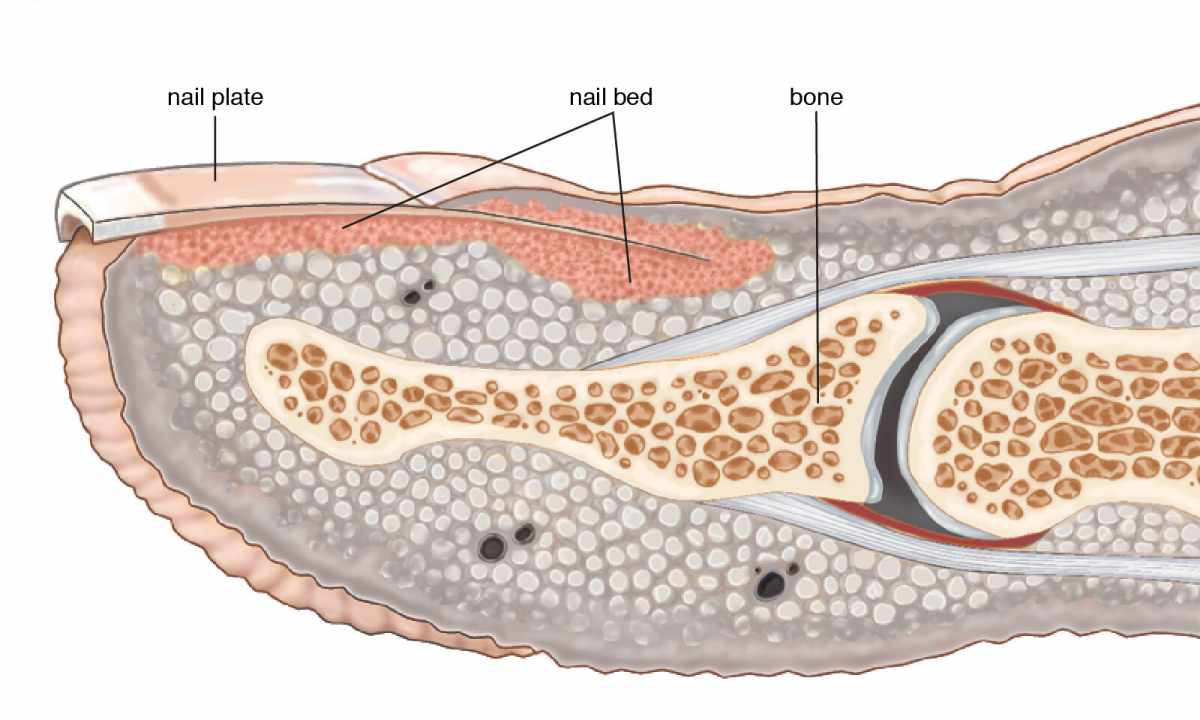Nails are translucent plates which protect finger-tips of hands and legs and facilitate collecting of small objects. They represent modification of epidermis and consist of the rigid fibrous protein called keratin.
Structure of nails
Nail matrix. It is directly under cuticle and is the only live part of nail. The matrix contains nerves and blood vessels, and all production of cages happens in it. The developed new cages push old forward, thus the nail plate is formed. The healthy matrix makes healthy nail, but in case of trauma in this area, the nail can grow with deformation which can be temporary or constant.
The nail plate consists of the dead compressed cages which do not contain blood vessels and nerves. The compressed cages form three layers: external, average and internal. Function of nail plate: protection of finger-tips of hands and legs.
The nail plate is on nail bed which contains nerves and blood vessels. It consists of cages which are pushed forward from matrix. These cages undergo process of keratinization therefore the nail plate grows in thickness and length. Function nail bed: delivery of food to nails through blood supply of matrix and ensuring support of body of nail. The nail alveole also known as half moon, is transition between matrix and nail bed. Best of all it is visible on thumb, it pearl color, and in form reminds half moon. The alveole is the intermediate stage between matrix and nail plate. The cuticle is narrow border which surrounds nail at the basis of nail plate and can be removed during manicure. Function: the cuticle forms important barrier against infections, protects matrix and the subject nail root fabrics. And also helps to create basis for nail. The cloak is deep fold of skin over matrix and around the basis of nail plate. Function: protection of matrix and basis of nail. The free edge of nail is the weakest part of nail which easily breaks. This part of nail acts over the finger basis. Its further form and length depend on taste of the owner.
Structure of nails
Nails, as well as hair, consist of keratin. Chemical composition of keratin represents: 51% of carbon, hydrogen of 7%, oxygen of 22%, 17% of nitrogen, are gray 3%. Keratinization is change of the living cells containing kernel in the flat dead keratosic cages which do not have kernel. Process begins in basal layer of epidermis and comes to an end in corneal layer. As cages are pushed out from matrix, they undergo process of keratinization therefore the nail plate grows in thickness and length. The dead keratosic keratinized cages form nail plate. Water content in nail affects its pliability or fragility. Normal content of water is about 10-12%. At lower content of water nails becomes brittle and, as a rule, begin to exfoliate. With age also liquid content in nails is reduced. The structure of nail is defined by heredity, but can change under the influence of external factors (ecology, food, the wrong leaving). Care of nails as care hands, has to be regular. Healthy nails have to be strong, elastic and pink color. And very often it is possible to determine problems with health of their owner by condition of nails.

